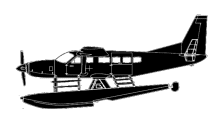Incident Overview

Description
The Cessna Caravan floatplane was prepared for a pleasure flight to the Bahamas. The aircraft took off from runway 19 at Abbotsford (YXX). About one minute later, as the aircraft was climbing through an altitude of about 400 feet (120 m) above ground level and as the pilot retracted flaps from 10 to zero degrees, the aircraft became uncontrollable. The aircraft banked left, descended rapidly, and crashed in a field about one-half mile south of the runway threshold, in a left bank with a near-level pitch attitude. Weather at the time of the accident was: calm wind, visibility 30 miles, fog in the vicinity, a few clouds at 25 000 feet, temperature minus 3 degrees Celsius, dew point minus 4 degrees Celsius, and an altimeter setting of 30.46 inches of mercury. FINDINGS AS TO CAUSES AND CONTRIBUTING FACTORS: “1. The pilot took off with frost adhering to the aircraft’s lifting surfaces, which increased drag and reduced the ability of the wings to produce lift.; 2. At take-off, the aircraft was about 510 pounds in excess of its maximum take-off weight, adversely affecting aircraft performance.; 3. The aircraft experienced an aerodynamic stall and loss of control when the flaps were retracted from 10 degrees to zero. Retracting the flaps reduced the amount of lift being produced by the wing, already performing poorly because of contamination.”
Primary Cause
Excessive weight and aerodynamic stall during take-off, leading to loss of control.Excessive weight and aerodynamic stall during take-off, leading to loss of control.Share on:





